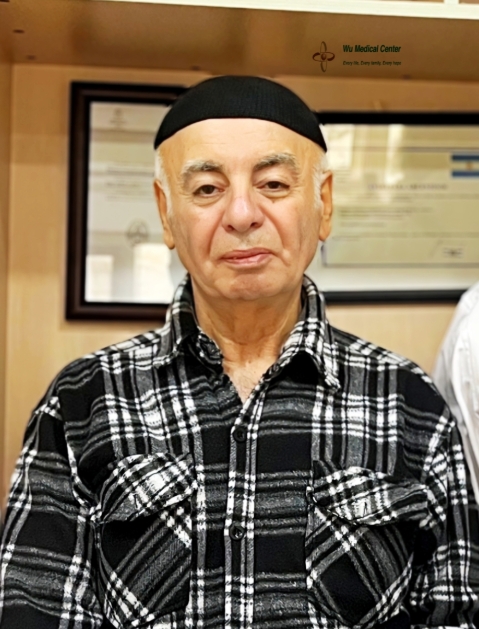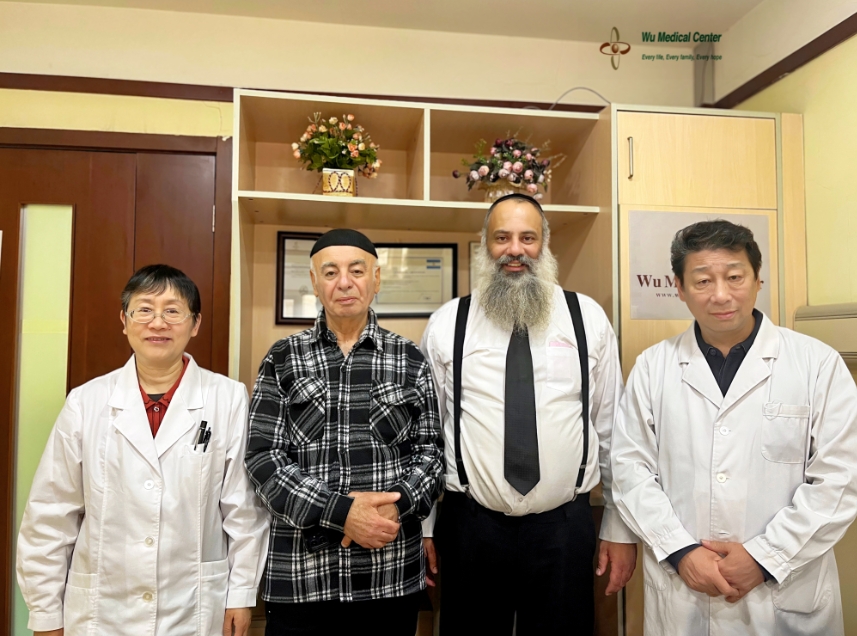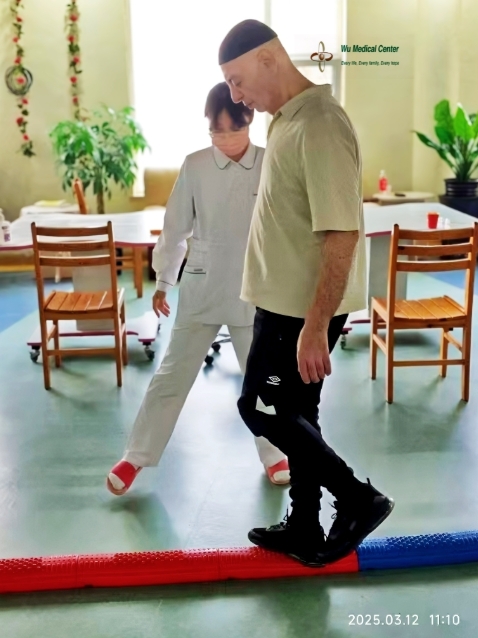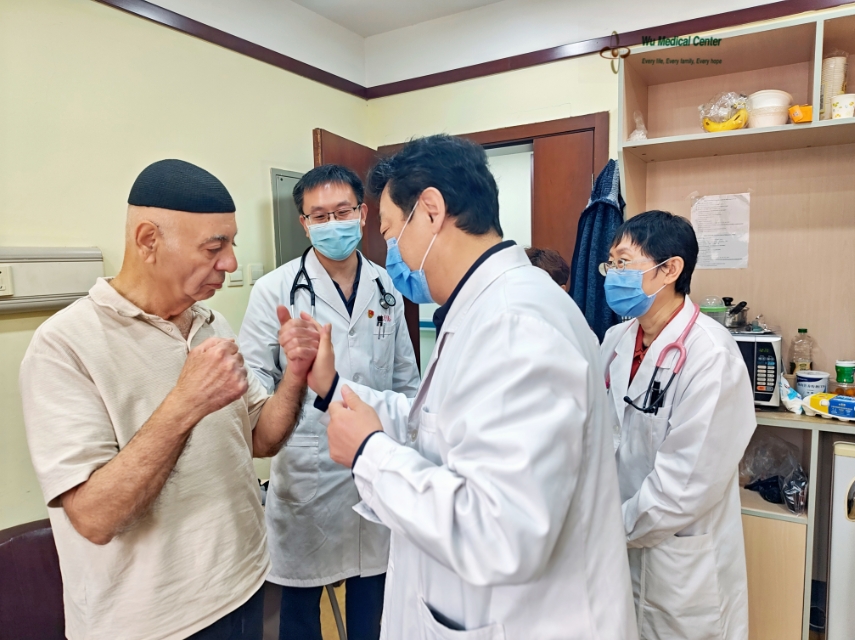Rafael Borochov-Oculopharyngeal muscular dystrophy-(Israel)
 Patient Name: Rafael Borochov
Patient Name: Rafael Borochov
Gender: Male
Age: 70 years
Nationality: Israel
Diagnosis: Oculopharyngeal muscular dystrophy
Admission Situation:
The patient was admitted primarily due to "progressive swallowing difficulties accompanied by ptosis for 8 years, worsening with cognitive decline for over a year," diagnosed with "oculopharyngeal muscular dystrophy." His main symptoms include weak eyelid opening and closing, weak chewing ability, swallowing difficulties, gradually worsening limb weakness, slow walking, balance issues, inability to stand on one leg, and difficulty standing on tiptoes, accompanied by cognitive decline, with decreased memory and calculation ability.
Physical Examination upon Admission:
The patient’s blood pressure was 156/94 mmHg, and heart rate was 66 beats per minute. He had slight ptosis in both eyelids, and his trunk was evenly covered with red skin lesions, without jaundice or bleeding points. Breath sounds in his both lungs were clear, with no significant dry or wet rales. His heart sounds were strong and rhythmic, with no significant murmurs. His abdomen was soft, with no palpable liver or spleen below the ribs.
Neurological Examination:
The patient was alert, but his speech was hoarse and unclear, with a slow rate. He had slight short-term memory impairment, reduced calculation ability, and comprehension difficulties, needing multiple repetitions to understand. His pupils were 3 mm in diameter, with a light reflex present, and ocular movement is acceptable bilaterally. His forehead lines were shallow, and eyelid closure strength was weak. He exhibited bilateral ptosis, weak eyelid elevation, and incomplete eyelid closure, with a positive "burying the eyelashes" sign. His nasolabial folds were symmetrical, and he could not extend his tongue outside his mouth, showing no deviation of the tongue. He had weak cheek puffing ability. The elevation strength of his soft palate was weak, with mild swallowing difficulties. Muscle strength in his left upper limb was grade 5, right upper limb was grade 4; his left lower limb was grade 4, and right lower limb wais grade 3+. He could only maintain single-leg standing on the right foot for 2 seconds and 3 seconds on the left foot; he could not stand on his heels and had difficulty standing on tiptoes. He rised from a seated position slowly. Muscle tone in his limbs was slightly low. Tendon reflexes were slightly diminished. Pathological signs were negative. Deep and superficial sensations were generally normal. He coud perform the finger-nose test, finger-to-finger test, and rapid alternating movements, as well as the heel-to-knee-shin test, but at a slow pace.
Treatment Process:
The patient was clearly diagnosed with "oculopharyngeal muscular dystrophy" upon admission. He was given CAST treatment to improve his internal environment, and a combination of mesenchymal stem cells and neural stem cells to repair muscle fibers, nourish muscle tissue, improve blood circulation, regulate immunity, and provide rehabilitation training as part of comprehensive treatment.
Post-Treatment:
The patient’s condition has significantly improved, with noticeable increases in muscle strength in the oculopharyngeal region and limbs. His cheek puffing strength has increased, and he no longer leaks air. The strength of the levator palpebrae muscles has improved, with wider eyelid openings; the orbicularis oculi muscle strength has increased, allowing near-complete eyelid closure during blinking, with a nearly negative "burying the eyelashes" sign. His tongue muscle strength has increased, and its flexibility has improved, allowing him to extend his tongue about 2-3 cm outside his mouth and move it freely from side to side. His speech is clearer than before, with a significantly increased rate. His short-term memory and understanding have improved, and he can perform two-digit addition and subtraction more quickly and accurately, generally without needing repetition. His balance has improved, as he can maintain tiptoe standing for over 10 seconds and single-leg standing for over 10 seconds. His walking and turning speed have increased and become smoother. His limb strength is generally at grade 5. His energy, physical capacity, and exercise endurance have significantly enhanced.



